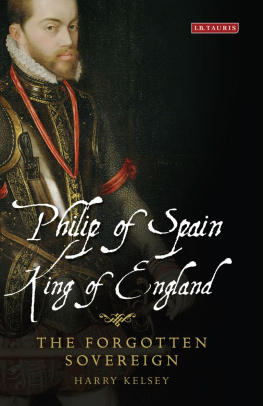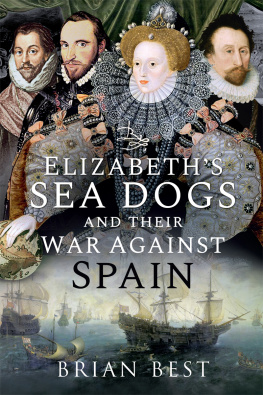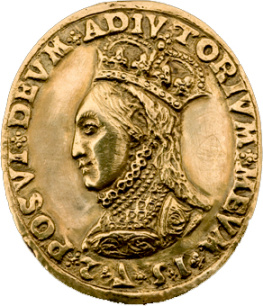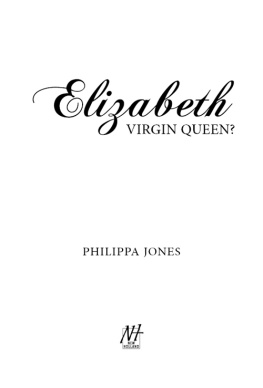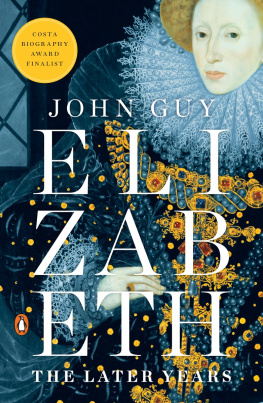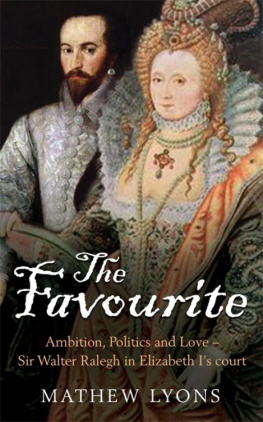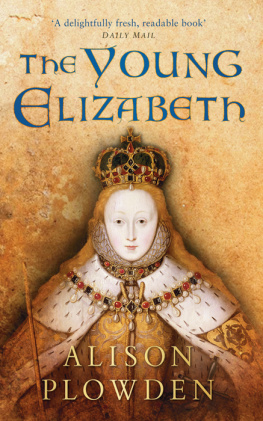
The author and publisher have provided this e-book to you for your personal use only. You may not make this e-book publicly available in any way. Copyright infringement is against the law. If you believe the copy of this e-book you are reading infringes on the authors copyright, please notify the publisher at: us.macmillanusa.com/piracy.
Contents
Dedicated to
the memory of my loving parents,
Palmer and Jess Wood Patterson
1. T HE P RINCE
In the year 1527, the most powerful man of the Western world was the Holy Roman emperor, Charles V, emperor of Austria and Germany, king of Spain and Sicily, and lord over a dozen or more other states in Italy and the Netherlands, which included Belgium. A rare confluence of noble family connections had made him sovereign over the largest realm in Europe, made still larger by explorers and conquistadors who had claimed for Spain lands of the vast New World and beyond it as far as the Philippines.
Charles was twenty-seven years old in 1527, not tall but well built, blond and blue eyed, with a long face, aquiline nose, and the thick lower lip that ran in his fathers family, the Habsburgs. When single, he had fathered an illegitimate daughter (Margaret of Parma), but now he was married to the beautiful, blond, twenty-four-year-old Portuguese princess Isabel, who was also his cousin (both were grandchildren of the late King Ferdinand and Queen Isabella of Spain). He had reneged on an agreement to marry Mary Tudor, the future queen of England, who was only a child at the time, so that he could wed Isabel.
The wedding had been held in Seville on March 10, 1526, and the following August Isabel had become pregnant, a fact over which virtually the entire population of Spain, where the couple resided, apparently rejoiced, the birth of a royal heir being always a huge cause for celebration.
The ninth month of Isabels pregnancy, May 1527, arrived with the fragrance of orange blossoms in the warm Castilian air but with international problems looming dangerously before Charles. If God in His mercy would grant him a son, a male heir to his empire and kingdoms, that advent would be such glad news to Charles that the gloomy clouds of threats from France and England and the pope might for a time be burst with brightness. Deeply serious about his Catholic faith (though not a friend of the pope), Charles doubtless was earnestly praying that Isabel would deliver a son, a successor, healthy and whole.
About three oclock in the morning of May 21, 1527, in the royal palace in Valladolid (then Spains capital), Isabel began a difficult labor, which she stoically endured, telling the midwife who attended her, I may die, but I will not cry out. Thirteen hours later, at four oclock that afternoon, Isabels eagerly awaited baby arrived. Charles, who remained with his wife throughout her ordeal, had received the happy answer to his prayer. He was the father of a son.
He took the infant in his arms, praying as he held him: May our Lord God make you a good Christian. I beg our Lord God to give you His grace. May it please our Lord God to enlighten you, that you may know how to govern the Kingdom you shall inherit.
As news of the babys birth rippled out from the palace, church bells pealed in gleeful annunication, first in Valladolid, then in nearby towns and villages, then throughout the land. In Castiles protective forts, cannons were fired in thunderous salute to the blessed event. Many of the countrys important persons, members of the royal court, noblemen, government officials, and high-ranking clergy, began making their way to the Valladolid palace to offer their congratulations and join the celebration.
Charles, meanwhile, in a pouring rain that had come sweeping through Valladolid, made his way on foot from the palace to the Church of Saint Paul (San Pablo) to give thanks for the prayed-for blessing that God had bestowed upon him.
Two weeks later, on Sunday, June 2, the royal infant was carried from the palace to the Church of Saint Paul, along a path scattered with rose petals and lemon and orange blossoms, to be baptized according to the Catholic tradition and to receive his name, one that history would forever remember. According to one account, many of those close to Charles wanted him to name the boy Fernando (Ferdinand), after the childs famous great-grandfather. One of those closest to Charles, the duke of Alba, while standing at the baptismal font during the ceremony, went so far as to insist that Charles name him Fernando.
Charles, however, had already made up his mind about what his son would be called and he couldnt be dissuaded. The infant prince would be named for Charless father. He would be Philip, grandson of Philip the Handsome. And so was he baptized by the primate of Spain, the archbishop of Toledo, Don Alonso de Fonseca, who drew the baptismal water from a large silver font and pronounced the babys name. The childs godparents were the duke of Bejar, who cradled the baby in his arms during the ceremony, and Charless older sister Eleanor, queen of France. Upon the infants baptism, a royal herald announced to the onlookers, w Oyd, oyd, oyd, Don Philipe, principe de Castilla por la gracia de Dios!
That solemn ceremony having been concluded, the joyous celebrations began, nights of banquets and days of feasts, celebratory bullfights and tournaments, jousts that featured some two hundred knights. Members of the royal court put aside other concerns and gave themselves to the celebration. There is consequently a great lull in politics, the ambassador from Bohemia wrote in an official report, and the courtiers think of nothing save the rejoicings.
Within days, however, the festivities were abruptly aborted on receipt of alarming news from Italy. An army of Pope Clement VII, who had allied himself with the French king, Francis I, Charless hostile brother-in-law, had challenged Charless forces based in Milan. Charless army had brushed aside the challenge and, marching south on Rome, had assaulted the Vatican on May 6, 1527, and had sent the pope and his cardinals fleeing for their lives, the pope narrowly escaping capture or worse. Out of control after their commander had been killed in the assault, Charless troops, many of them German mercenaries, had, according to one report, slaughtered some six to eight thousand men of Rome and had sacked the city, leaving much of it in ruins. News of the peril to the pope and the atrocities committed against the capital of Christendom ignited a firestorm of outrage throughout Western Europe.
Charles learned of the events about the middle of June and, persuaded that the festive mood was now inappropriate, he called off the celebrations of his sons birth. Strong reaction to the atrocities in Rome had burst through Spain as it had done elsewhere in Europe. Defiantly denouncing Charles from their pulpits, many Spanish priests had demanded an end to the celebrations, and many of the members of Charless Spanish court who had been joyfully celebrating went into mourning over the deeds of their sovereigns army.
For the newborn prince it was an inauspicious beginning to his public life, which officially began when at age one year he was, on May 10, 1528, recognized as heir to the throne of Castile, Spains major province, by Castiles legislature, the Cortes. The Cortes then also recognized Philips mother, the Empress Isabel, as regent whenever Charles was out of the country, which he soon would be. Isabel was likely thinking little about becoming regent, however. She was then pregnant with a second child, who was born on June 21, 1528, in Madrid and was named Maria.



